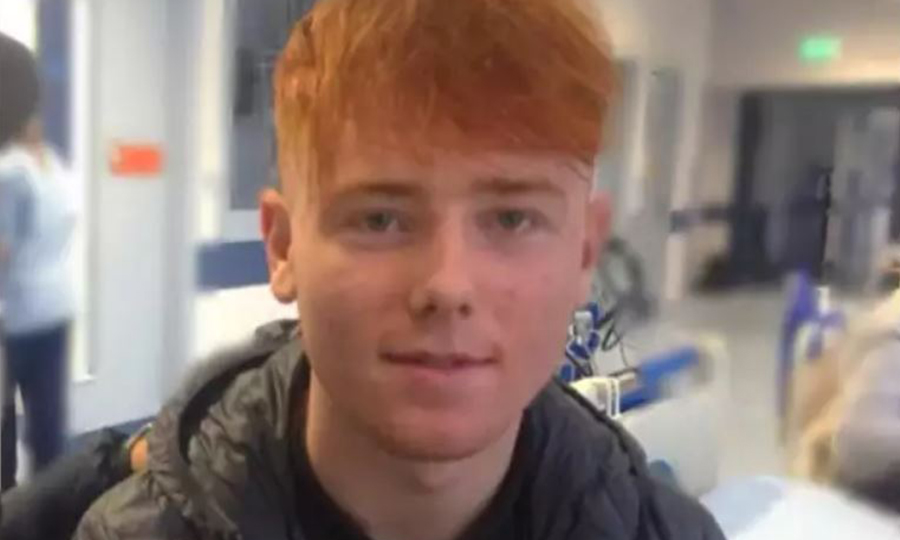
THE Government should fund more secure spaces for mentally-vulnerable teenagers as up to half of Scotland’s units are full of English teenagers, according to a landmark report.
The review released last week confirmed The Sunday Post reports that Scots young people are being put behind bars because council-run secure care units are forced to take in young people from England and Wales for the money.
William Lindsay, 16, should have been sent into secure care but took his own life in Polmont Young Offenders’ Institution after being taken off suicide watch on October 7.
Richard Holloway, former bishop of Edinburgh, led the inquiry that reported last week and found the units – most of which are run by charities – are under financial pressure to “keep beds as full as possible”.
He warned the provision of secure care needs to be planned on the basis of need in Scotland – and not be “left to the market”.
Mr Holloway said: “If we need secure accommodation and it has to be, as it were, paid for by England and Wales, then maybe the Government should do more.”
We reported last month how around half of the 89 beds in Scotland’s five secure care units were being taken up by children from England and Wales.
Mr Holloway said William Lindsay’s death should be a catalyst for change, adding: “He was a wee, lost boy of 16, there wasn’t a secure place for him – so he ended up in there.”
The Kilbrandon Again report into youth justice systems, commissioned by Action for Children and the Children’s Commissioner in Scotland, has recommended that the practice of using Scottish secure places for children from elsewhere should be re-examined. There are four secure accommodation units in Scotland run by charities and one that is operated by Edinburgh City Council.
The report said: “We were informed the financial pressure on these organisations is to keep beds as full as possible, which explains their acceptance of children from outwith Scotland.
“Approximately half the 84 Scottish places occupied are unavailable for young people in Scotland, some of whom will instead go into penal institutions,” the report warned.
“We are advised the number of young people, boys under 18, in Polmont at any one time matches the number of places being occupied by children from many hundreds of miles away in England and Wales.”
But it noted that Polmont is funded by the Scottish Government.
The report added: “These different financial models for providing for young people under 18 who are a risk to themselves and to others represents an incentive to place young people in need and in trouble in prison, rather than a therapeutic environment.
“The tragic and unnecessary death of young William Lindsay underscores the perils of the present system.”
Paul Carberry, director of Action for Children Scotland, said the inquiry – a “follow-up” to the 1964 Kilbrandon report which led to the creation of the Children’s Hearing System – had highlighted an important issue.
He said: “It is about saying there are kids on our doorstep who we should be providing opportunities for.”
The Scottish Government said arrangements had been in place for “cross-border placements” in secure units for a number of years.
A spokesman said there is “no clear evidence” supporting young people from England prevented those in Scotland being admitted.
He added: “It is the local authority’s duty to provide, or make provision for, secure care.
“Placements are often filled and vacated on an emergency basis and so the position is very dynamic.
“We would expect local authorities to contact all providers to verify real-time availability, and to notify the contract manager and the Scottish Government if they are having difficulty in placing a young person.”
Kibble, Paisley
For young people aged 12 to 18, with 18 places in three units. Each person is assigned support including key worker and tutors.
The Good Shepherd, Bishopton
Has a campus with an 18-bed secure unit, a six-bed close support unit and a three-bed semi-independent cottage which provides care and support for vulnerable 12 to 17-year-olds.
Rossie Young People’s Trust, Angus
Has 18 places for young people aged 12 to 18 in three housing units, each with six en suite bedrooms.
St Mary’s Kenmure, Bishopbriggs
Provides 24 secure beds for 11 to 18-year-olds on a campus with facilities including a pool and gym.
City of Edinburgh Council
A unit on the city outskirts has six places for young people aged between 10 and 17-years-old.

Enjoy the convenience of having The Sunday Post delivered as a digital ePaper straight to your smartphone, tablet or computer.
Subscribe for only £5.49 a month and enjoy all the benefits of the printed paper as a digital replica.
Subscribe